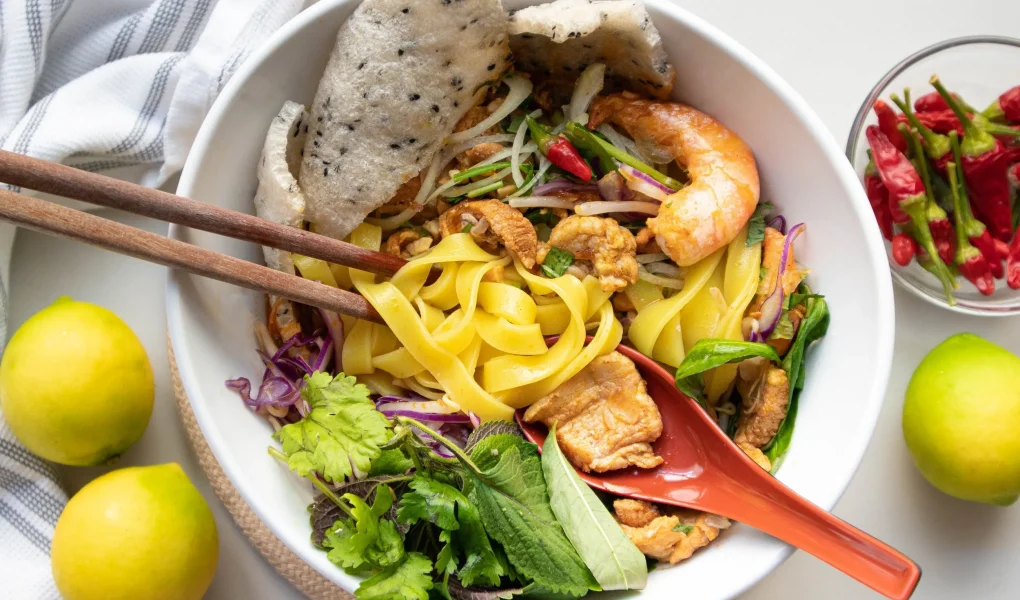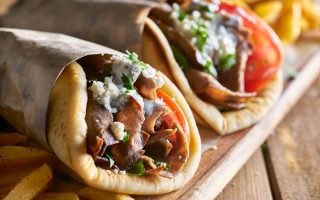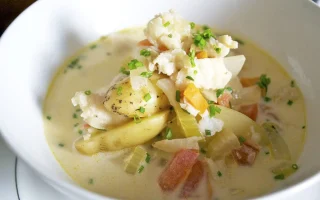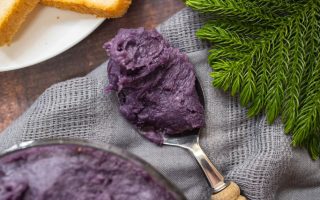lettersforvivian.org – Mi Quang is a celebrated Vietnamese dish known for its vibrant colors, rich flavors, and unique combination of ingredients. Originating from the Quang Nam Province in central Vietnam, this turmeric noodle soup has become a beloved staple in Vietnamese cuisine. In this article, we will delve into the history, ingredients, and preparation of Mi Quang, as well as its cultural significance.
The Origins of Mi Quang
Mi Quang has its roots in the central region of Vietnam, particularly in Quang Nam Province, which is renowned for its rich culinary traditions. The dish was traditionally prepared for special occasions and family gatherings, but over time, it has become a popular everyday meal across Vietnam. Its diverse flavors and textures reflect the cultural influences of the region.
Essential Ingredients
Mi Quang is distinguished by its flavorful broth and a variety of toppings that create a delightful culinary experience. Some of the key ingredients include:
- Turmeric Rice Noodles: The noodles are made from rice and are infused with turmeric, giving them their distinctive yellow color and a subtle earthy flavor.
- Broth: Unlike other Vietnamese noodle soups, Mi Quang’s broth is minimal, often just enough to coat the noodles. It is typically prepared with pork or chicken bones, seasoned with fish sauce, and enhanced with aromatics like shallots and garlic.
- Proteins: Common protein choices include shrimp, pork, chicken, or a combination of these. They are often marinated and sautéed to add depth to the dish.
- Toppings: Fresh herbs such as cilantro and mint, crushed peanuts, sliced banana blossoms, and toasted sesame rice crackers add texture and flavor.
- Condiments: Lime wedges, chili peppers, and fish sauce are served on the side, allowing diners to customize their bowl to taste.
Preparation and Presentation
Preparing Mi Quang involves several steps, starting with the creation of a flavorful broth. The noodles are cooked separately and then layered with the chosen proteins and toppings. A small amount of broth is then ladled over the noodles, just enough to moisten them. The dish is typically served with a side of fresh greens and herbs, allowing for a refreshing balance of flavors.
Cultural Significance
Mi Quang is more than just a meal; it is a representation of the cultural heritage of central Vietnam. It embodies the region’s resourcefulness and creativity in using local ingredients to create a dish that is both satisfying and flavorful. The communal aspect of preparing and sharing Mi Quang during family gatherings highlights its role in bringing people together.
Conclusion
Mi Quang is a testament to the rich culinary diversity of Vietnam. Its vibrant colors, fragrant aromas, and harmonious blend of flavors make it a standout dish in Vietnamese cuisine. Whether enjoyed at a family gathering or a local eatery, Mi Quang offers a taste of Vietnam’s central region that is sure to leave a lasting impression.




